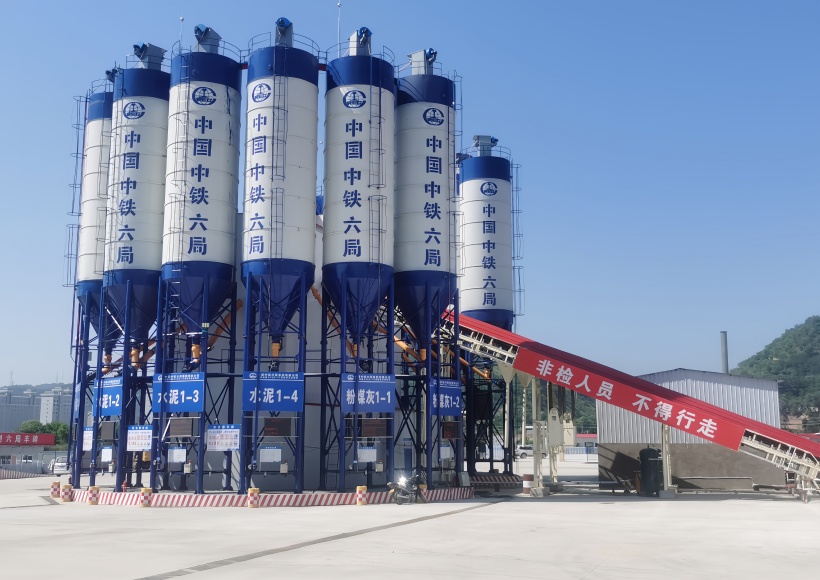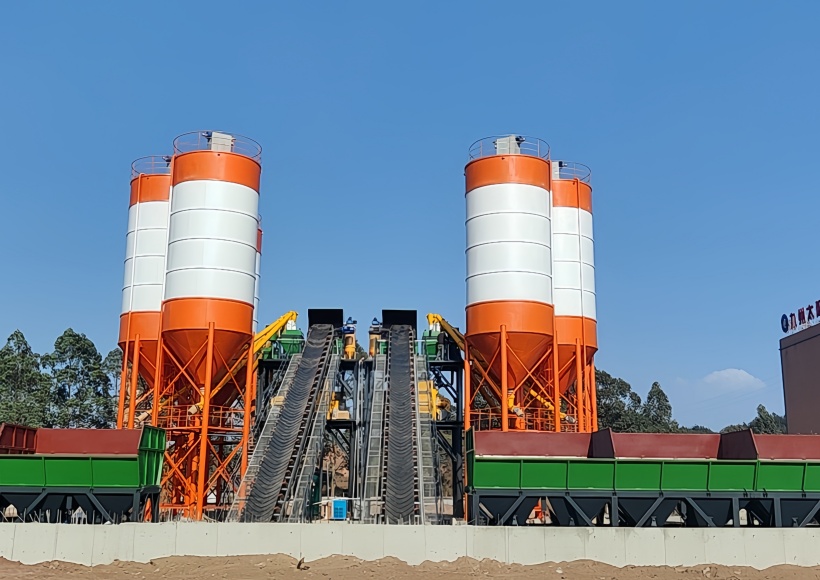As a professional concrete batching plant manufacturer, Tongxin Machinery provides a detailed analysis of the actual production capacity of the HZS120 model. This article provides an authoritative reference for those purchasing concrete batching plants.

I. Comparative Analysis of Theoretical and Actual Production Capacity
1. Theoretical Capacity Calculation Model
The in"120" the HZS120 concrete batching plant model represents its theoretical maximum production capacity of 120 m³/h. As a professional concrete batching plant manufacturer, we use the following calculation basis:
• Single discharge capacity: 2 m³ (JS2000 mixer standard configuration)
• Ideal duty cycle: 60 seconds/cycle
• Cycles per hour: 60 minutes ÷ 1 minute/cycle = 60 cycles
• Theoretical output: 60 cycles × 2 m³ = 120 m³/h
2. Actual Output Range
Professional concrete batching plant manufacturers remind you: In actual production environments, subject to various factors, normal output typically remains in the range of 84-96 m³/h (equivalent to 70%-80% of the theoretical value):
Production Conditions | Actual Output Range | Efficiency Utilization Rate |
Optimal Operating Conditions (Fully Automatic/Non-Interruption) | 90-100 m³/h | 92% |
Normal Production (Including Transport Intervals) | 80-90 m³/h | 80% |
Limited Conditions (Loading Difficulties/Failures) | 60-70 m³/h | 55% |
II. Six Key Factors Affecting Concrete Batching Plant Productivity
1. Transport Scheduling Coordination
• Best Practice: Mixer Truck Turnaround Time within 2 minutes (Production Capacity Over 100 m³/h)
• Common Bottlenecks:
- Untimely Transport Vehicle Scheduling (Every 2-minute delay results in a 4-m³ reduction in production)
- Irrational Loading Area Layout
2. Raw Material Supply Stability
• High Moisture Content in Sand and Gravel Leads to Congested Transport
• Agglomeration in the Cement Silo Impacts Continuous Material Discharge
• Screw Conveyor Jam
3. Mixing Cycle Optimization
• Standard Process Time (Total 60 seconds):
- Feeding and Mixing Phase: 30 seconds
- Unloading Operation Time: 15 seconds
- Feeding Preparation Time: 15 seconds
• Technology Upgrade: Pre-feeding Technology Can Reduce Cycle Time to 52 Seconds
4. Impact of Material Properties
• Strength Grade Differences: C30 concrete has a 10-15 second shorter mixing time per batch than C50.
• Excessive aggregate moisture content: This results in a 20% decrease in metering efficiency.
• Specialty concrete production: Fiber-reinforced concrete requires a longer mixing time (resulting in an approximately 25% reduction in production).
5. Equipment Maintenance
• Common Failure Impacts:
- Liner wear (10% efficiency reduction when clearance > 5mm)
- Sensor failure (causing metering errors, impacting automated production)
- Cylinder seal failure (unloading delay of 3-5 seconds per batch).
6. Environmental and Human Factors
• Climate Impact: 30% reduction in production in temperatures below -10°C (requiring additional aggregate preheating).
• Operating Skills: Novice operators are 15-20 m³/h less efficient than experienced operators.

III. Five Practical Strategies for Improving Concrete Batching Plant Capacity
1. Equipment Upgrade
✓ Use larger transport vehicles (reduces turnover frequency)
✓ Install a real-time aggregate moisture content monitoring system
✓ Improve moisture-proofing facilities (to prevent cement compaction)
2. Production Management Optimization
• Vehicle Scheduling: Maintain two vehicles ready for loading (to ensure continuous loading)
• Maintenance System: Clean the main engine daily
• Personnel Training: Standardized operations can improve efficiency by 8%
3. Process Improvement
• Implement a premix process to reduce mixing time
• Optimize aggregate grading to improve conveying efficiency
• Adopt advanced metering and control systems
4. Intelligent Monitoring Applications
• Install sensors to monitor equipment operating status
• Implement a real-time production data collection system
• Establish an early warning mechanism to detect faults in advance
5. Regular Performance Evaluations
• Conduct monthlyproduction capacity analysis
• Quarterly equipment performance testing
• Annual overhaul and upgrade planning
IV. Solutions to Common Problems with Concrete Batching Plants
1. Causes of Differences Between Actual and Theoretical Output
Theoretical output is a limit value calculated under conditions of zero waiting time, full automation, and ideal mix ratios. Actual production is inevitably affected by factors such as transportation intervals, manual operation, and troubleshooting.
2. Equipment Selection Guide
• HZS120 Concrete Batching Plant Applicable Scenario: Medium-sized projects with daily production demand less than 800 m³
• HZS180 Concrete Batching Plant Applicable Scenario: Large-scale projects with daily production demand greater than 1000 m³
3. Production Evaluation Criteria
• Qualification Index: Consistently maintaining a production rate of 80 m³/h or above (including normal losses)
• Abnormality Troubleshooting Process:
① Check if the cycle time exceeds 60 seconds
② Confirm that the waiting time for transport vehicles is less than 5 minutes
③ Check the continuity of aggregate supply
④ Verify the accuracy of the metering system
Summary: The ideal production range for the HZS120 concrete batching plant is 80-100 m³/h. By optimizing equipment configuration, improving production management, strengthening maintenance, and implementing intelligent monitoring, actual production efficiency can be significantly improved. It is recommended to establish a regular inspection mechanism and conduct quarterly production evaluations to promptly identify and resolve issues affecting production capacity.
[Professional Concrete Mixing Plant Manufacturer's Advice]
When selecting concrete mixing plant equipment, it's important not only to consider theoretical specifications but also actual production conditions. As a professional concrete mixing plant manufacturer, Tongxin Machinery offers free on-site surveys and production plan design services to help customers select the most suitable concrete mixing plant configuration and maximize their return on investment. Please contact our technical team for personalized solutions.